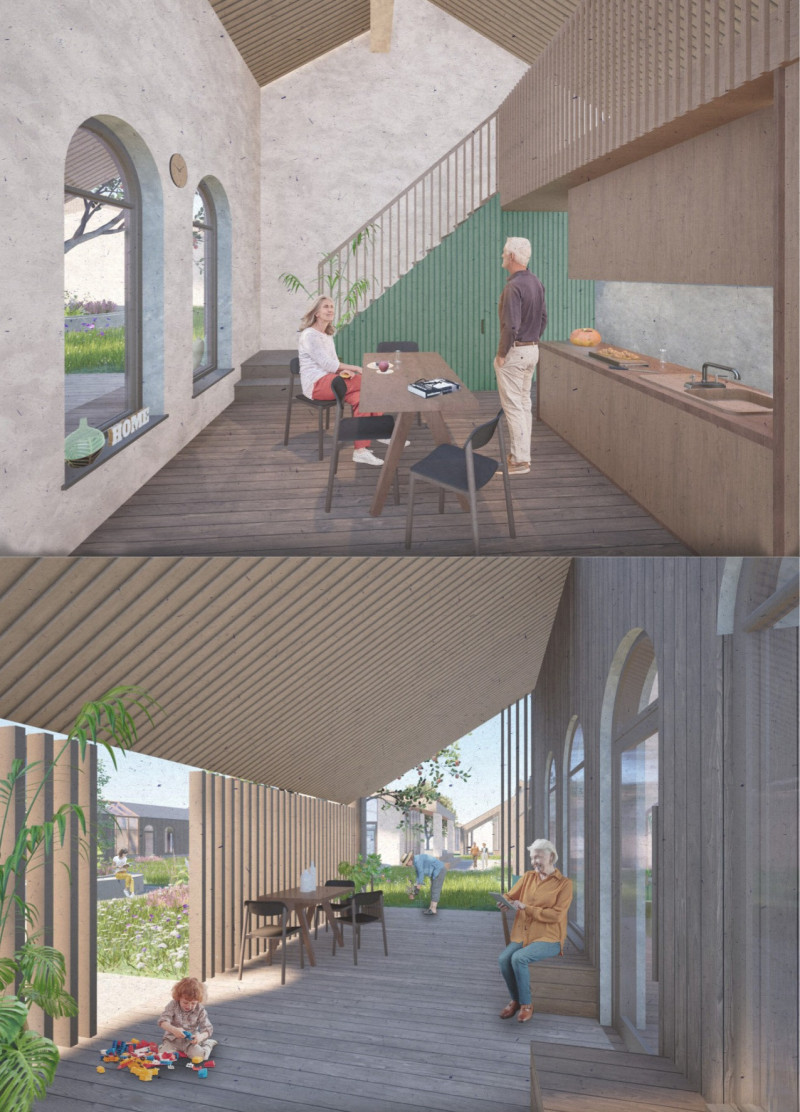5 key facts about this project
At first glance, the design is characterized by its clean lines and purposeful geometry, which demonstrate a clear intention to achieve both aesthetic balance and practical utility. The building’s volumetric composition is carefully arranged to promote fluid movement and interaction among its spaces. The interplay of light and shadow is a significant aspect of the project, as strategically placed openings allow natural light to permeate the interior, enhancing the user experience while reducing reliance on artificial lighting.
The project employs a diverse set of materials that contribute to its overall character. Reinforced concrete provides structural resilience, while wood cladding introduces warmth and texture, creating a visual contrast that punctuates the façade. Large glass panels not only invite the outside in but also establish a connection with the natural surroundings, inviting occupants to experience the environment interactively. This choice of materials reflects a commitment to sustainability and long-term durability, demonstrating an understanding of the ecological responsibilities inherent in modern architecture.
Critical to the project’s success is its spatial configuration. The layout is intuitive, with a clear delineation of public and private areas, enabling seamless circulation throughout. Spaces are designed to be multifunctional, allowing for adaptability to various uses, which is essential in today’s dynamic architectural landscape. Key areas such as [specific spaces, e.g., communal hubs, private offices, or leisure areas] are positioned thoughtfully to encourage social interaction among users while offering moments of privacy.
In addition to being aesthetically appealing and functionally adept, the project excels in its sustainable design strategies. Features such as rainwater harvesting systems, energy-efficient building materials, and green roofs not only diminish the environmental impact of the construction but also promote a healthier habitat for inhabitants. This holistic approach to sustainability emphasizes the significance of eco-friendly practices in modern architecture, showcasing how design can contribute positively to the environment.
Unique design approaches are evident throughout the project. The architect has skillfully blended contemporary elements with local architectural traditions, reflecting the cultural identity of [Geographical Location]. This sensitive incorporation of local context enriches the design while fostering community engagement. Furthermore, the project emphasizes transparency and openness, creating a welcoming atmosphere that encourages interaction among residents and visitors alike.
This architectural project stands as a testament to how thoughtful design can address both functional needs and environmental considerations. By artfully merging form with purpose, it successfully creates spaces that enhance the quality of life for its users while respecting the natural and cultural fabric of the location.
For those interested in exploring the nuances of this project, additional insights can be gained by reviewing architectural plans, architectural sections, and other architectural designs that illuminate the underlying ideas and concepts. By delving deeper into these elements, one can appreciate the complexity and intention behind the design choices made throughout this architectural undertaking.


























